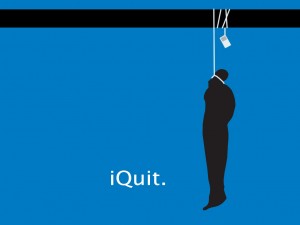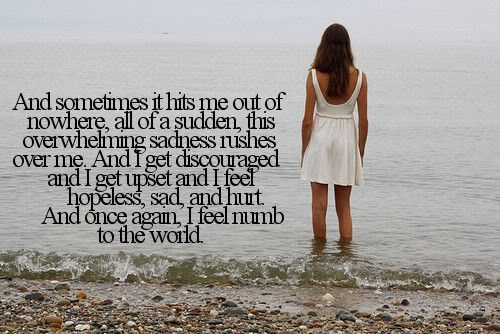For as long as I have been involved with ill mental health I have heard the old rhetoric that men need to talk more. It’s true that men don’t talk in the same way women do. They don’t share their ‘problems’ in the same ‘healthy way’. For the same number of years we have had our attention drawn, as a society, to the alarmingly high number of men taking their own lives. We are reminded that when pain exceeds coping strategies we can often see suicide as the only answer.  This would suggest that the biggest group of people who commit suicide just need to learn to cope and talk about how they feel. After all that’s what the figures say, right? Some studies even go as ar as to differentiate between those enduring mental illness and ‘others’ who commit suicide. Almost as if enduring mental illness makes it alright or at least excusable.
This would suggest that the biggest group of people who commit suicide just need to learn to cope and talk about how they feel. After all that’s what the figures say, right? Some studies even go as ar as to differentiate between those enduring mental illness and ‘others’ who commit suicide. Almost as if enduring mental illness makes it alright or at least excusable.
It’s customary at these times that organisations apply for added funding to address this issue, citing the research as a lever to further their cause, ensuing in various groups, leaflets and therapies to encourage men to cope by talking. Shiat su, Aroma therapy, mindfulness and cognitive behaviour groups become the order of the day. All attracting new funding to help these inept members of society that are unable to help themselves. Ouch, that sounds a little bitter…………..
Having been on the receiving end of many of these ventures I can say that they are, while useful, a vehicle to raise the profile of many well-meaning organisations, not to mention the funding gap.
This realisation that more men, of certain ages, than women take their own lives , despite all the funding and groups of the past, is increasing to an alarming rate is not a new one. The question is, what will they do that they haven’t done before? Despite throwing money at this ‘problem’ for over twenty years or more they are still far from solving it.
“The issue is that you men are so defensive and take criticism so badly, you just don’t talk about your feelings in a healthy way and keep it all bottled up, that’s why you can’t cope” 
Perhaps, for some of us this is a reality. But this stereotypical portrait is only half the picture. These are only half the facts, if that. There are in these original studies, which are cherry picked, notes on methodology, gaps and interpretation. All boring stuff really, in fact so boring many repeat the ‘facts’ but neglect to mention the other stuff. So what is it they don’t mention?
These studies often collect data in various strains. On one hand they collect information on suicide fatalities, on the other suicidal behaviour and never shall the twain meet. So while it’s true that more men kill themselves than women, they also note that men tend to use more lethal methods than women when it comes to suicide. People don’t talk about suicide.
Going back to the data then. Suicidal behaviour is also further broken down into suicide ideation, suicide plan and suicide attempt. One interesting statistic that is mentioned, more women attempt suicide than men, what? I hear you cry…… how can that be if more men die of suicide? Well if you remember, they count the ‘succesful’ suicides separately. In reality, just as many men as women attempt suicide, it’s just that more men die. Oh right, statistics don’t work like that though do they? Ok, ok so, in their terms, just as many women as men attempt suicide. Men are more succesful and more women fail? Sound absurd yet? Of course it does. And there in lies the issue.
They get number crunchers to grind the figures which sucks out the human factors of some thing that is very much emotionally charged, they don’t have weights and measures for that. This means that when the final analysis is presented the picture is askew. Good news for those organisations seeking funding right?
Those of you who have tried to get support for a loved one in times of real crises will get where I’m coming from. It all comes down to a risk assessment driven by the availability of beds. Chances are you were given a leaflet on suicide prevention and a follow-up appointment a week or so later, if you were lucky. This leaves untrained, no disrespect, relatives and friends trying to deal with a real situation armed with nothing more than a leaflet that insists all that needs to happen is for the person to talk about their problems in a healthy way and build in new coping strategies. A recipe for disaster if ever there was one. People don’t talk about suicide.
Chances are you were given a leaflet on suicide prevention and a follow-up appointment a week or so later, if you were lucky. This leaves untrained, no disrespect, relatives and friends trying to deal with a real situation armed with nothing more than a leaflet that insists all that needs to happen is for the person to talk about their problems in a healthy way and build in new coping strategies. A recipe for disaster if ever there was one. People don’t talk about suicide.
This is the reality that you see in the news all too often. The slant being that the services are overstretched and poor so and so was denied the much-needed help they deserve. A comfort to the grief-stricken I’m sure.
People, irrespective of gender, see suicide as an answer to the lives they are experiencing and that is the sad fact. By focusing on one group more than an other, services end up marginalising both genders and at the very least, instead of addressing the real issue, they fudge the figures and claim a success. They see the problem as people taking their life and not what leads to suicidal thoughts.
The question has to be, what is it about living that makes people want to die? Any statistician will readily run off and prepare a well designed spread sheet when We all know that the answer is different for each and every person. What drives one person to the edge another person will take in their stride. The powers that be will cry out that the base range of study is too broad but still maintain that services need to be person centred.
Surly if people learn new coping strategies, like talking therapy, then they are better placed to deal with the trials life throws at them? Another assumption that builds capacity for funding. 
The frustrating thing is that they have all the information they need to understand. Paradoxically, unless you have been through it, you will never understand it. It’s certainly true that not every body who feels suicidal is enduring mental illness or vise versa. But this is not about numbers on a spreadsheet with a top down cost and effect driven solution, far from it.
This is about people’s lives. Your life, your grans life, your mum or dad or brothers life, your husband, your son, your friend. Those that compile these figures and roll out these solutions don’t know you, your dad, your sister. They will tell you that to be effective any solution has to be unattached to emotion. Talking will work, that’s all that’s needed to give people better coping skills.
How do you explain to some one how you feel or what’s going on in your head when you barely understand it yourself?  Sure, you can talk about how worried you are about bills or life issues in particular. Believe it or not, they are easy to grab onto amid the chaos within the unrelenting tornado filled mind. A mind that faces the chaotic tornado every minute of every day without an end in sight. Battered, beaten and beleaguered. Yeah but people need to learn to talk before it gets to that stage, right?
Sure, you can talk about how worried you are about bills or life issues in particular. Believe it or not, they are easy to grab onto amid the chaos within the unrelenting tornado filled mind. A mind that faces the chaotic tornado every minute of every day without an end in sight. Battered, beaten and beleaguered. Yeah but people need to learn to talk before it gets to that stage, right?
And there in lies an answer. It’s not the elements of the storm we need to talk about. It is the storm it’s self. It’s not the fine details that holds the key.  The elements are all the things within the storm. The storm is the very thing that no one wants to talk about. They all say they will but, when it comes down to it, they can’t. Why? Because they don’t know how.
The elements are all the things within the storm. The storm is the very thing that no one wants to talk about. They all say they will but, when it comes down to it, they can’t. Why? Because they don’t know how.
People within the storm will talk about the elements of the storm and it will sound chaotic. People outside of the storm will listen to the elements of the storm and say things like “Don’t worry, it will all work out ok” Yet neither will say the name of the storm because people don’t want to talk about suicide. Why would they? 
I know that if you are having suicidal thoughts you won’t mention it because you haven’t made your mind up yet. If you are having suicidal feelings, there is a little uncertainty, some loose ends perhaps. Believe, it’s ok to talk about it.
I understand that if you are worried about some one, you might not want to mention it incase it tips them over the edge, incase you can’t prevent it or fear that you will say one of those phrases you swore you would never say. And so it goes unsaid. Believe, it’s ok to talk about it.
Ironically, believe it or not, most of us will have had suicidal ideation at some point in our lives, no matter how fleeting. Yet it’s something none of us actually want to talk about. We will talk about the elements within ‘the perfect storm’ of circumstances because we understand that.  That is the key to preventing suicide, talking about ‘it’. That perfect storm of circumstances. It’s ok to have suicidal thoughts. It’s ok to acknowledge them and talk about them just as it’s ok to talk about suicidal feelings. It’s ok not to have all the answers, sometimes sitting in the rain together makes the perfect storm of circumstances a little easier.
That is the key to preventing suicide, talking about ‘it’. That perfect storm of circumstances. It’s ok to have suicidal thoughts. It’s ok to acknowledge them and talk about them just as it’s ok to talk about suicidal feelings. It’s ok not to have all the answers, sometimes sitting in the rain together makes the perfect storm of circumstances a little easier. 
Here is a thought, getting it out in the open will help ‘people’ verbalise their suicidal thoughts and feelings, help them be mindful of what they think and how they feel more than talking about their problems will. Lets make it ok to ask, are you thinking of harming yourself? Do you want to tell me about it? When professional support is needed, you could save the life of someone you care about and how awesome a thought is that? Believe, it’s ok to talk about it.
